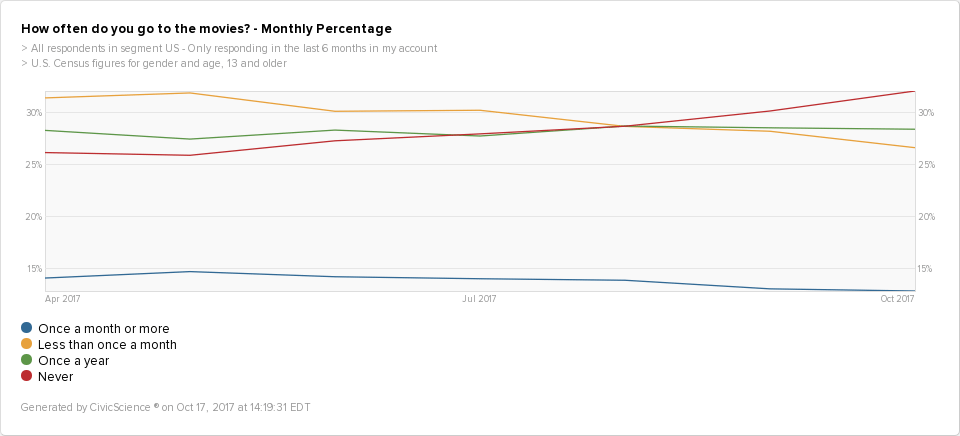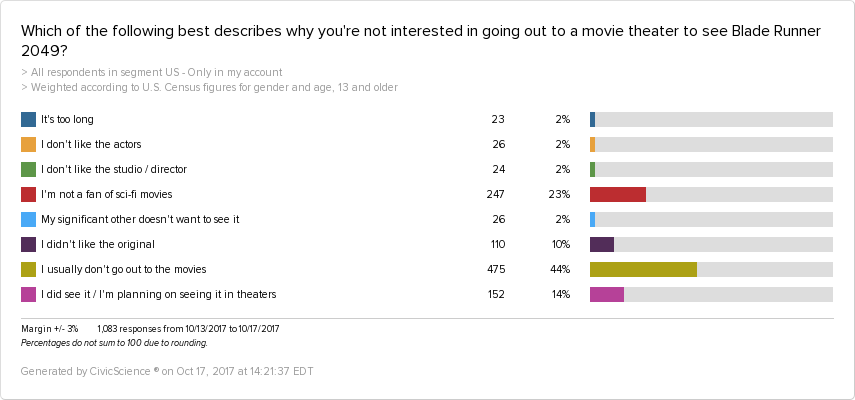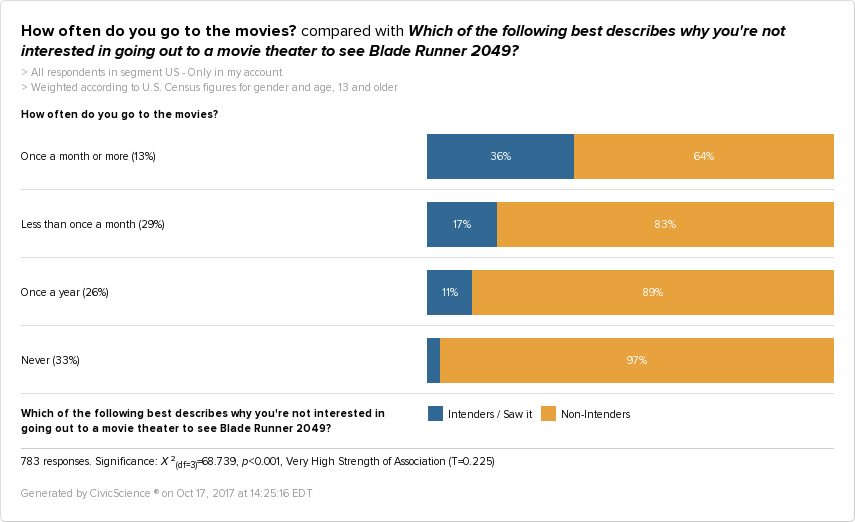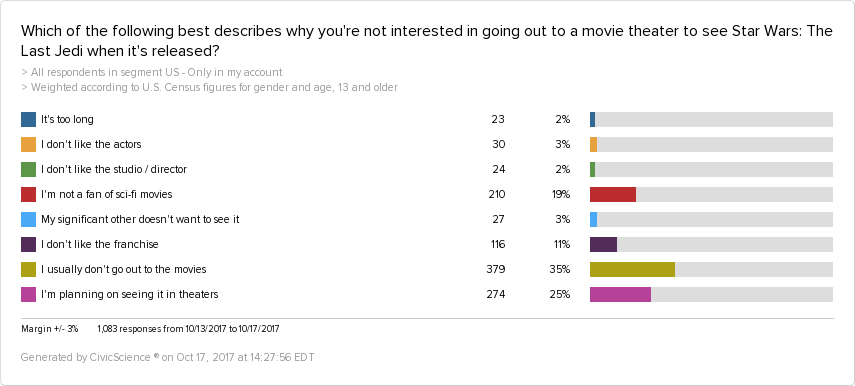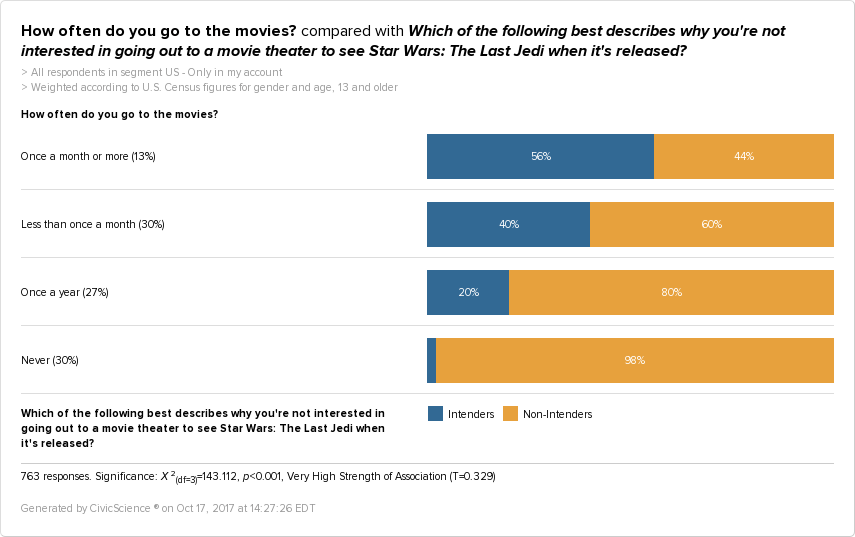The Gist: It seems only special movie events drive infrequent moviegoers to theaters. Fortunately for Disney, Stars Wars: The Last Jedi falls into this category for many consumers. Unfortunately for Sony and Time Warner, Blade Runner 2049 doesn’t appear to make the grade.
Overview
The Hollywood box office suffered its worst summer attendance in 25 years, which doesn’t bode well for movie studios and their parent companies’ year-end financial results. There are several hypothesized reasons for this dropoff in performance, but the most common seems to be that people only go to the theaters for movies they deem a “must see.” For a movie to become a box office success, it must be viewed by the public as a “special event” that can’t be delayed until it comes to Redbox or Netflix.
Moviegoers in the Aggregate
Let’s first take a look at moviegoing behavior among the general population, and how those trends have changed over the past 6 months.
56% of the population only go to the movie theater once a year or not at all. Only 14% of the population attends movies once or more per month.
Over the past 6 months, respondents who say they go to the movies once per month or more decreased from ~15% to 10%. Respondents who say they go to the movies less than once per month decreased from ~29% to ~23%. Respondents who answer once per year stayed relatively static at ~27%. Respondents who never go to the movies increased from ~26% to ~35%. All of these trends are negative signals for the movie industry.
Blade Runner 2049
As previously stated, today’s box office success seems to require a “special event” to attract the once per year moviegoers, not just the consistent attendees. Blade Runner 2049 received critical acclaim prior to its release, which included a star-studded cast and visually pleasing sci-fi effects.
All of this could have foretold a positive financial outcome for Sony and Time Warner, despite outlaying $155M+ for the movie’s production budget. Unfortunately, the movie has only taken in ~$60M domestically during its first two weeks in theaters.
The above results show that there are a slew of reasons for respondents not going or intending to see Blade Runner 2049 in theaters. However, the largest ones are “I’m not a fan of sci-fi movies” (23%) and “I usually don’t go out to the movies” (44%).
The movie didn’t seem to capture infrequent moviegoers, either, as you can see below:
Star Wars: The Last Jedi
We also ran a question regarding Stars Wars: The Last Jedi. This movie would appear to fall into the “special event” category, given the build up and fan base. Stars Wars: The Force Awakens had a production budget of ~$300M and revenue of ~$2B.
Thus, one may assume that Disney’s production budget would be similar or higher for Star Wars: The Last Jedi. With that level of cash outlay in mind, it would be traumatic for Disney if the movie saw similar financial results as Blade Runner 2049.
The data are more favorable for Star Wars: The Last Jedi, with 25% of the population planning on seeing it. Additionally, the largest detractors, being, “not a fan of sci-fi” and “don’t go out to movies,” were smaller compared to Blade Runner 2049, at 19% and 35%, respectively.
When we cross referenced these results with “how often do you go to the movies?” the data suggests that Star Wars: The Last Jedi has that “must see” factor that may attract not only the frequent moviegoers, but also the coveted once per year audience. 20% of once a year moviegoers plan to see the movie in theaters, compared to just 11% for Blade Runner 2049.
Conclusion
The data suggest that Blade Runner 2049 did not have that special factor to attract infrequent moviegoers, which contributed to the lackluster financial outcome for Sony and Time Warner. In contrast, our data suggest that Star Wars: The Last Jedi does have that “must see” factor, which may bode well for Disney’s financial results at the end of their Q4, and into Q1 of 2018.

